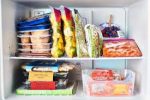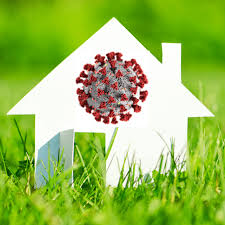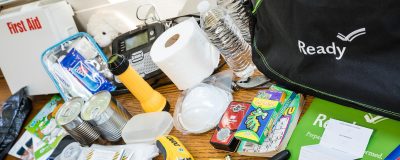Stocking the Freezer During to Prepare for a Lock Down

As the coronavirus spreads, people across the world are preparing for the possibility of forced quarantines, and shutdowns of businesses and services. Keeping fruits, vegies and meats stocked in your refrigerator is not a practical idea if you are going to be in a mandatory lockdown or just want to limit your trips to the store for your own personal safety.
Freezing can extend the shelf-life of a huge variety of foods. You can stock up on frozen items right from the store, but if supplies are running low, it’s just as good to pop your own perishables in the freezer.
Berries, mango, peaches, cherries freeze well, as do bananas. They can all make for a convenient smoothie or, slightly thawed, a sweet treat. For veggies: corn, peas, and green beans, spinach, peppers, and onions are all good options. Avocados can also be frozen in chunks when they’re ready to eat. The key is to freeze things before they start to get overly ripe.
A lot of prepared foods are perfect for freezing, such as sliced bread, soups, lasagna, grilled chicken breast, sandwich meat and cooked rice — so consider cooking big dishes that can be portioned into single servings to freeze, then eat on the go. Not just cooked meat, but any raw meat, including chicken pieces, ground beef, steak, bacon and pork can all be thrown into the freezer and thawed to cook at a later date. Many people don’t think to freeze items like milk, cream, or yogurt, because the consistency of these items can change dramatically when frozen. However, they’ll keep longer, and can be used in sauces, soups and other recipes where the texture won’t matter.
Avoid freezer burn
Always freeze food once it has cooled down, not while it’s still hot. Make sure you get as much air out of your storage container as possible and seal tightly to prevent air from getting in and causing freezer burn.
If you are freezing leftovers, wrap them in foil first for extra protection before putting them into a zip-top plastic bag. A vacuum sealer to suck all the air out helps food last just a little bit longer.
Organize your freezer space
You should have a variety of foods in your freezer. Label foods and date them so that you can use the first in, first out system of consumption.
Freeze in appropriate portions. Consider what one serving would be like and freeze in portions that make sense for your use. If you are cooking for a family or a friend’s family, adjust sizes accordingly.
Make an extra batch of whatever you cook for a freezer meal. If you are making meatballs or lasagna, it’s much easier to double the recipe than to have to make it again just to freeze. Eat one now and freeze one for later.
Soups and chilis freeze very well and heat up quickly. Freeze a portion or two each time you make soup and you’ll have a great variety later on.
Don’t discount breakfast. Muffins, breakfast burritos, even banana bread (just slice before freezing) make great additions to the freezer.
A little treat. Cookie dough can often be frozen, and you’ll be able to throw a fresh batch of cookies into the oven quickly.








 Kim N. Bregman
Kim N. Bregman